 |

|
 |
Last update : 18 March 2024
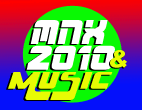 |
MNX2010 Audio-VST Education |
|
NX2010 PC Audio Sites - Introduction :
Nowadays people can choose from an overwhelming variety of soundcards. However, the quality of a lot of these cards is something to dispute. Some manufacturers simply promise more than their products really offer. Some cards have a very high latency, crackle, or just sound bad. Some cards aren't provided with good drivers for it, or for all operating systems, are to minimal or have bugs in it. In general, there are three different kinds of soundcards:
The cheaper soundcards, like the Korean Terratec and Hoontech soundcards, have disadvantages such as bad drivers or no support for some programs. Or the hardware just isn't sufficient and delivers mediocre sound quality, like the Soundblaster soundcards. The professional soundcards, like from Motu and RME, offer good hardware and software quality, but these are mostly so expensive that only the real music freaks and professionals can afford them. Fortunately there are some exceptions to this, and in every price category you have some cards with an excellent price vs. quality. But the fact remains that if you have high demands a good soundcard will cost up to 500 Euros, which is quite expensive, surely for me.
For those who can afford it, you can of course buy a professional soundcard. Then you are sure that you have something good, and you can have lots of fun with it for a long time. Surely you'll have to use it in a fast computer to make use of all the capabilities of it. Then, there is still the problem with the software. With the release of a new OS, such as Windows XP, and new hardware, there is a fair chance that something goes wrong, and that there are no compatible or good drivers available. This happens even with the professional products. These 'childhood-diseases' are mostly solved over time, and therefore it might be a good idea not to buy the newest product available. Wait at least until updates are available! A tip concerning this: check newsgroups on certain products and read FAQ's; there you can find user experiences, and problems with that specific product, which can be quite horrifying sometimes... Try to find opinions, pros and contras etc. Once bought it can be a hell of a job to get rid of it again! Purchasing software?
|
 |
PC Audio Notes |
|
MNX2010 PC Audio Sites - Notes : What will the future look like?
It is clear that the possibilities in the world of audio are still developing. Nowadays it's possible to buy a computer that is able to create professional audio recordings for about 4000 euros/dollars.(2000 for the computer and 2000 for the music soft & hardware). These developments are necessary in some way, because the digital quality of an audio is definitely not even coming close to the quality of an analog recording. Also the improvements in the developing of SP-Dif I/O patching, which makes it possible to make recordings with a lot less degraded quality, are slowly developing. But one thing is clear though: the developments in the audio world are way too slow in comparison with for instance the world of video. I think that's funny, because I think there is more money involved in the audio business. But apparently nobody wants to invest in a good and reliable new standard in audio matters. When it should be up to me, there would already be a 24/96 standard with 5.1 surround output and stereo output with surround simulation (both digital en analog). That would mean that CD's would be used for (maxi)singles or demo's, and DVD's for albums, while using a DVD player to play these. Actually this is becomes reality in a way: a few months ago the first DVD players were introduced which support the 24/96 surround 5.1 standard. It should be possible to burn even a 16-bit version on the DVD, and choose via a menu which one to play. That means that you're able to produce your music in a far better quality, although it is still quite expensive. If the music industry will notice any of these subjects remains still to be seen. It will need a whole lot of investments and will be a lot more expensive (and that while music is already way too expensive!) and that's way I'm afraid it's not going to happen overnight. Take the difference between DVD + and -, which I think is very childish and revealing where it's all about: money and power. It makes it obvious that the pleasure of -and service to- the consumer is considered not as important as the money they can make. One other thing to stress this are the outrageous prices asked for MP3's and the razzia's conducted on MP3 downloaders. Well what else is new? It's all about the money.
With a new media tremendous amounts of money could be made, if one had a positive view on things. Maybe the MP3 market would collapse if a new, extremely good quality audio standard would appear.
A logic step would be to raise the standard sample frequency to 32 bit/96 KHz. Or two times the standard now : 2x44.1= 88.2, so 32 bit/88.2 KHz. that's more easy to convert. But because of the slow developments this will take a while, and begins with hard- and software.
Although I think this is still going to take a while, the big software producers like Steinberg, Pro-Tools and I-Magic are already making their software ready for the future. Higher sample rates, complex possibilities , surround outputs and more are build in and the software is tuned for use with (mostly their own) hardware. If the moment would come that people are going to more invest in this, it would certainly effect both hard- and software.
And on both sides there could be made a whole lot of other improvements. Take for instance the latency (delay) of the PC audio cards. Often a very low or even zero latency is promised. No latency doesn't exist off course, and low latency is only achieved with good, recent WDM drivers (a sort of Direct Audio drivers), or Asio drivers (with a sequencer like Cubase, must say there are also stand-alone Asio drivers ). What also counts in this matter is the speed of the computer, the faster the better. In short: only a good, 'fast' soundcard won't get you there where you want to be. Fortunately soundcards are being developed which take the load of the CPU, via large audio buffers or other extra's build in the audio cards. Also the possibilities of patching multiple audio cards in one PC, or synchronizing multiple PC systems connected with each other, are developed. I will explain more about this matter later on.
Nowadays studios are as much digital as possible, with nearly almost the same quality as the analog studios, but with way more possibilities. Think of the many ways of editing audio material: it's digital, so distorting, manipulating, filtering, simulating effects etc. etc., are possible. Also the costs a fraction in comparison with the old days. The fact that it still costs a small fortune to build a digital studio is because of the need for special components that will make a 'closed' digital system, what means as much as to patch all the necessary SP-Dif in- and outputs. This need for extra, specialized components reveals the fact that most audio system producers aren't really able to deliver a real professional audio system. Although it certainly looks nice, one that really covers all your needs. That's why people are mainly still depending on systems made by MOTU or PRO-Tools, or some unknown companies which are kind of specialized in this matter.
|
Audio Links
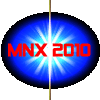
>>> To MNX2010 MainSite <<< Back to TOP
|
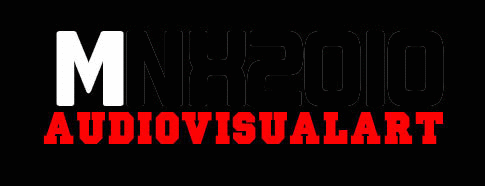 This site is meant as a support site for everything that has got something to do with audio, but especially PC-orientated audio.
Nowadays a wide range of soundcards is available, varying from simple to semi-professional till studio quality. It hasn't been for long that the PC is suitable for professional audio use. Present day's fast computers are capable of working with multiple channels at once with a variety of VST/DX-plugins and -instruments without problems. So if you are in the lucky possession of such a fancy fast computer, you're already quite far on the road of making music with your PC. Next things necessary to buy are a good, often expensive soundcard and an audio-software program.
This site is meant as a support site for everything that has got something to do with audio, but especially PC-orientated audio.
Nowadays a wide range of soundcards is available, varying from simple to semi-professional till studio quality. It hasn't been for long that the PC is suitable for professional audio use. Present day's fast computers are capable of working with multiple channels at once with a variety of VST/DX-plugins and -instruments without problems. So if you are in the lucky possession of such a fancy fast computer, you're already quite far on the road of making music with your PC. Next things necessary to buy are a good, often expensive soundcard and an audio-software program.

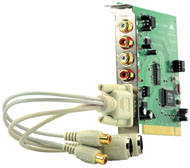 Purchase of a soundcard?
Purchase of a soundcard?
 Maybe the best thing to do is not to stare blindly at all available soundcards. Find out what exactly your wishes are and buy a card that meets your requirements more or less, or wait until that dream-card becomes affordable. Better and better cards become available, so perhaps that won't take that long!
Maybe the best thing to do is not to stare blindly at all available soundcards. Find out what exactly your wishes are and buy a card that meets your requirements more or less, or wait until that dream-card becomes affordable. Better and better cards become available, so perhaps that won't take that long!
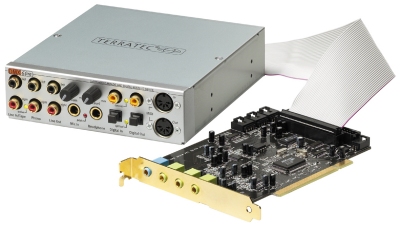 You might not consider it with hardware, (then again, why not?) but with software this is a golden tip: buy second-hand! If you want to buy a professional software program but don't want to spend professional money: buy a license second-hand, from an earlier version for instance. That shouldn't cost that much, and than you can upgrade it to the newest version for a fraction of the cost. It could save you a lot of money!
You might not consider it with hardware, (then again, why not?) but with software this is a golden tip: buy second-hand! If you want to buy a professional software program but don't want to spend professional money: buy a license second-hand, from an earlier version for instance. That shouldn't cost that much, and than you can upgrade it to the newest version for a fraction of the cost. It could save you a lot of money!

 Everything digital
Everything digital
 This situation is clearly in disadvantage for the home studio user, who is simply not in a financial position to afford a 'closed' digital system. Professional studios mostly invest in a complete audio system developed for a certain software program, or the other way around, a software program specialized for use with a certain hardware system. Examples of this are Cubase/Nuendo, Pro-Tools and Emagic Logic, where every button, fader, light, patch and switches are connected to the parameters of the software. A trustworthy semi-professional system with these possibilities is still not the market yet. The 'big brands' still don't fully exploit the wishes and possibilities and aren't investing in it. Like Steinberg's Huston, which may look like it offers (at least some) of the mentioned functions and possibilities, but it turns out that it really doesn't at all. In fact, the only thing it does is to control some of the parameters, but for AD/DA conversion you still need extra modules.
And that while the price definitely suggests that that would be in the package already! Slowly better systems are developing though, instead of the expensive toys which turn out to be no good at all in the end. It should be time that a total integration between hard- and software would occur, which unites the advantages of analog and digital systems, be of an exceptional quality, and besides that also be relatively cheap, easy and very convenient to use. That would create a better world for all of us ..... MNX 2010, Oct. 2003
This situation is clearly in disadvantage for the home studio user, who is simply not in a financial position to afford a 'closed' digital system. Professional studios mostly invest in a complete audio system developed for a certain software program, or the other way around, a software program specialized for use with a certain hardware system. Examples of this are Cubase/Nuendo, Pro-Tools and Emagic Logic, where every button, fader, light, patch and switches are connected to the parameters of the software. A trustworthy semi-professional system with these possibilities is still not the market yet. The 'big brands' still don't fully exploit the wishes and possibilities and aren't investing in it. Like Steinberg's Huston, which may look like it offers (at least some) of the mentioned functions and possibilities, but it turns out that it really doesn't at all. In fact, the only thing it does is to control some of the parameters, but for AD/DA conversion you still need extra modules.
And that while the price definitely suggests that that would be in the package already! Slowly better systems are developing though, instead of the expensive toys which turn out to be no good at all in the end. It should be time that a total integration between hard- and software would occur, which unites the advantages of analog and digital systems, be of an exceptional quality, and besides that also be relatively cheap, easy and very convenient to use. That would create a better world for all of us ..... MNX 2010, Oct. 2003
